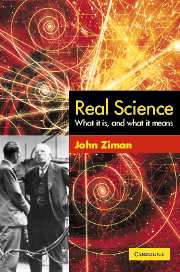Book contents
- Frontmatter
- Contents
- Preface
- 1 A peculiar institution
- 2 Basically, it's purely academic
- 3 Academic science
- 4 New modes of knowledge production
- 5 Community and communication
- 6 Universalism and unification
- 7 Disinterestedness and objectivity
- 8 Originality and novelty
- 9 Scepticism and the growth of knowledge
- 10 What, then, can we believe?
- Endnotes
- Bibliography and author index
- Index
7 - Disinterestedness and objectivity
Published online by Cambridge University Press: 24 August 2009
- Frontmatter
- Contents
- Preface
- 1 A peculiar institution
- 2 Basically, it's purely academic
- 3 Academic science
- 4 New modes of knowledge production
- 5 Community and communication
- 6 Universalism and unification
- 7 Disinterestedness and objectivity
- 8 Originality and novelty
- 9 Scepticism and the growth of knowledge
- 10 What, then, can we believe?
- Endnotes
- Bibliography and author index
- Index
Summary
Striving towards objectivity
When Robert Merton pointed out that scientists are constrained to be ‘disinterested’, he was referring mainly to their professional behaviour. As we have seen [3.5], there are many conventions that severely limit the operation and public display of personal motives in the regular practice of academic science. The direct effect is thus to sever the connections between scientific knowledge and its personal origins.
According to this norm, it might seem that scientific knowledge should always be presented as cognitively objective – i.e. as if referring to entities that exist quite independently of what we know individually about them. But the implication that science rests on and requires absolute realism calls for further discussion, which we postpone to a later chapter [10.7].
As a social norm, however, disinterestedness functions primarily to protect the production of scientific knowledge from personal bias and other ‘subjective’ influences. Strictly speaking, this is impossible [5.3]. There is no denying that scientific facts and theories are produced by human beings, whose minds cannot be completely cleansed of individual interests. Academic science therefore strives to attain consensual objectivity by merging these interests in a collective process.
The norm of disinterestedness thus combines naturally with the norms of communalism and universalism to strip scientific knowledge of its subjective elements and turn it into a genuinely communal product. Indeed, the impersonal style of formal scientific discourse is designed to make research claims appear immediately acceptable.
- Type
- Chapter
- Information
- Real ScienceWhat it Is and What it Means, pp. 155 - 181Publisher: Cambridge University PressPrint publication year: 2000
- 1
- Cited by



